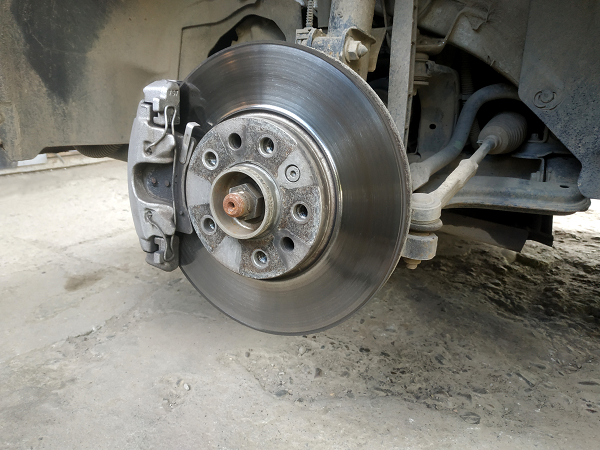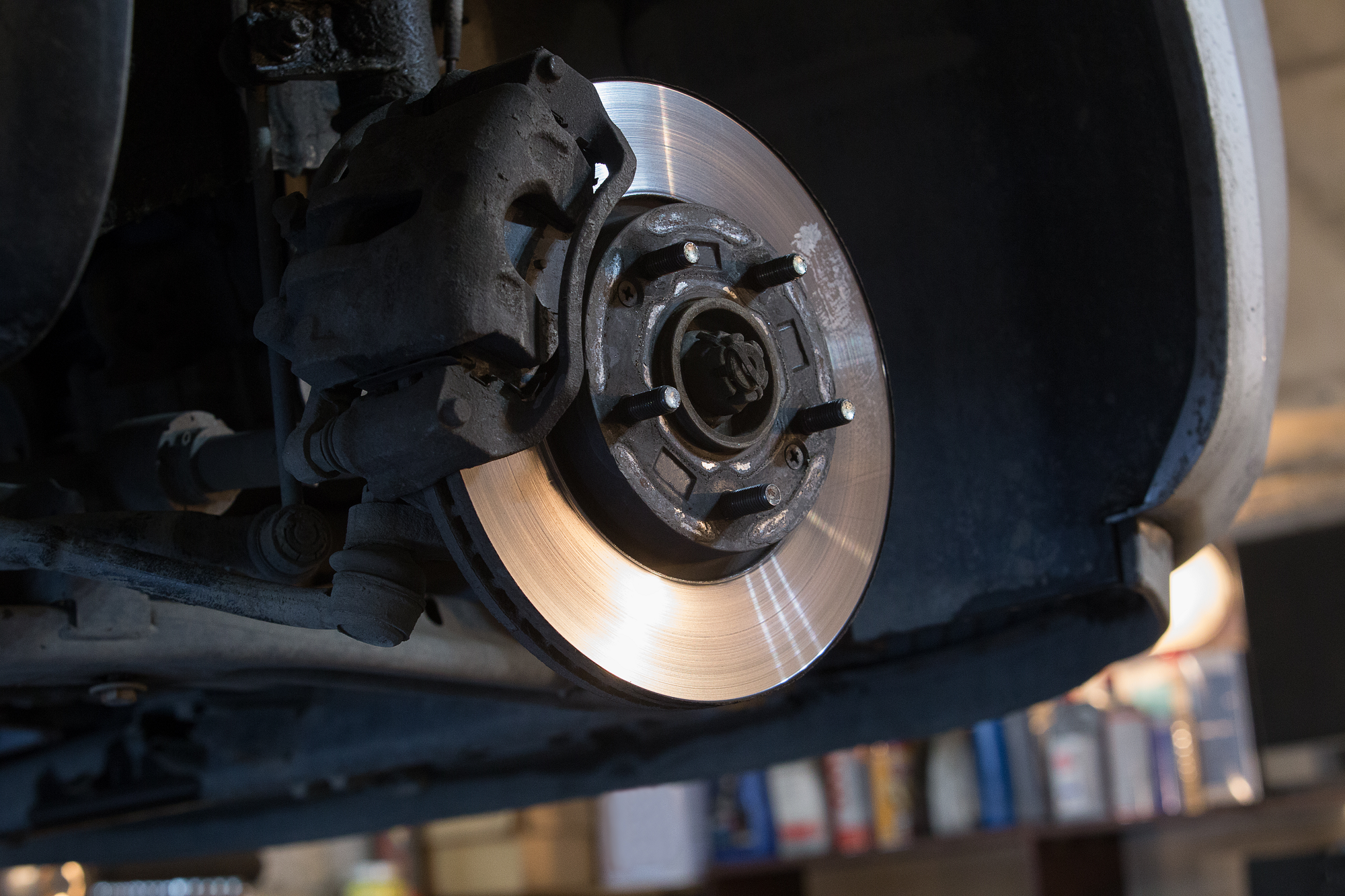Understanding the Key Elements That Influence Your Brake System’s Performance and Lifespan
Brake pad wear and longevity depend on several critical factors. First, the type of brake pads affects their lifespan, with organic pads lasting around 20,000 miles, while ceramic pads can reach up to 70,000 miles. Your driving habits matter, too; aggressive acceleration and frequent stops hasten wear. Vehicle weight also plays a role; heavier vehicles experience quicker degradation. Additionally, road conditions and seasonal changes can increase brake demand, compounding wear. Regular inspections and maintenance practices are vital for optimal performance. Understanding these elements can help extend your brake pads’ life effectively. Discover more insights to enhance your knowledge. If you are looking for professional services of brake repair in Vancouver WA, contact Springs Brake and Suspension today.
Type of Brake Pads
Understanding the different types of brake pads available is essential for optimizing performance and longevity. The type of brake pads you select significantly impacts their lifespan and overall vehicle safety.
Organic brake pads, while cost-effective, typically last around 20,000 miles, making them suitable for lighter vehicles. Semi-metallic brake pads offer a balance, lasting between 30,000 to 60,000 miles, but can wear down rotors more quickly.
In contrast, ceramic brake pads excel in longevity, often reaching up to 70,000 miles, thanks to their superior heat dissipation and reduced dust production.
It is crucial to select high-quality brake pads tailored to your vehicle’s weight and driving conditions, as these factors influence brake pad durability and performance.
Driving Habits

Driving habits play a crucial role in determining brake pad longevity and performance. Aggressive driving, marked by rapid acceleration and frequent braking, significantly accelerates brake pad wear. This behavior often results in higher wear rates than those associated with smoother driving techniques.
In urban areas, constant stop-and-go traffic compounds this issue as the need for braking increases dramatically. Riding the brakes generates continuous friction, further degrading brake pads.
Conversely, smooth braking habits enhance safety and extend brake pad life, minimizing heat and wear. Additionally, maintaining a safe distance from the vehicle ahead allows for smoother deceleration, reducing the frequency of hard stops and benefiting brake pad longevity.
Adjusting your driving habits can lead to notable improvements in brake performance and lifespan.
Do you need Brake Repair services for your vehicle?
Contact Springs Brake and Suspension today for reliable and professional assistance!
Vehicle Weight
Although vehicle weight is often overlooked, it significantly influences brake pad wear and overall braking performance. Heavier vehicles, like SUVs and trucks, require more braking force and accelerating brake pad wear. The increased load means brake pads must work harder to stop, reducing lifespan.
Additionally, towing trailers or carrying heavy loads exacerbates the strain on your braking system, leading to quicker degradation of components.
Consider these factors regarding vehicle weight:
- Heavier vehicles exert more force on brake pads.
- Increased weight shortens the lifespan of brake pads.
- Towing amplifies braking system strain.
- Regular inspections are crucial for heavier vehicles.
- Material composition affects wear rates.
Understanding how vehicle weight impacts brake pad wear can help you maintain effective braking performance.
Road Conditions
Road conditions are pivotal in brake pad wear, significantly impacting their longevity and performance.
When you drive on hilly terrain, the frequent braking required increases strain on your brake pads and accelerates wear. Additionally, rough road conditions like potholes and uneven surfaces demand more braking force, further shortening their lifespan.
Urban driving, characterized by stop-and-go traffic, contributes to faster brake pad wear than smoother motorway driving, where braking is less frequent.
Weather conditions also affect your driving style; wet and icy roads require more cautious braking to maintain control, which can lead to increased degradation.
Seasonal changes, particularly in winter, necessitate constant braking, ultimately increasing the wear rates of your brake pads.
Maintenance Practices
Regular maintenance practices are essential to ensure optimal brake performance and longevity. By following a consistent maintenance routine, you can significantly extend the life of your brake pads and overall braking system.
Here are key practices to implement:
- Inspect your brake pads and rotors every 10,000 to 15,000 kilometers.
- Change brake fluid every two years or as recommended by your vehicle manufacturer.
- Address any noises like squeaking or grinding immediately to prevent further damage.
- Maintain proper tire pressure to reduce stress on the brake system.
- Implement a routine maintenance schedule for checking brake components and fluid levels.
These practices enhance your vehicle’s safety and ensure your brake pads perform efficiently over time.
Driving Environment
The driving environment plays a crucial role in the wear and longevity of brake pads.
Urban driving, characterized by frequent stops and starts, significantly accelerates brake pad wear compared to highway driving, which has more consistent speeds.
Additionally, driving in hilly terrain requires more frequent braking, increasing wear.
Rough road conditions strain the braking system, leading to faster degradation of brake pads.
You should also consider seasonal weather changes; extreme temperatures can cause overheating and material degradation.
Lastly, wet or icy conditions often necessitate more braking for vehicle control, contributing to wear faster.
Understanding these driving conditions can help you effectively manage and mitigate brake pad wear.
Choosing Springs Brake and Suspension: The Smart and Right Choice for Your Vehicle Needs
At Springs Brake and Suspension, we take pride in providing the best solutions for our customers to ensure that your vehicle runs smoothly and safely. Our wide range of maintenance services covers everything from routine auto maintenance to major repairs, so we can easily cater to all your vehicle service needs. Our skilled technicians are experts in brake system components, including brake calipers, drum brakes, and brake fluid flushes.
Choosing the right professional is essential for ensuring optimal performance and longevity when it comes to brake pad maintenance. We understand that a qualified technician can make all the difference. Our experienced technicians conduct thorough inspections and offer tailored advice based on your unique driving habits, significantly impacting brake pad wear.
At Springs Brake and Suspension, we are committed to showcasing our excellent services that keep your vehicle in shape.
In conclusion, when you choose us, you’re choosing a trusted partner for all your vehicle maintenance and repair needs. Let us help you keep your vehicle performing at its best!
Do you need Brake Repair services for your vehicle?
Contact Springs Brake and Suspension today for reliable and professional assistance!

